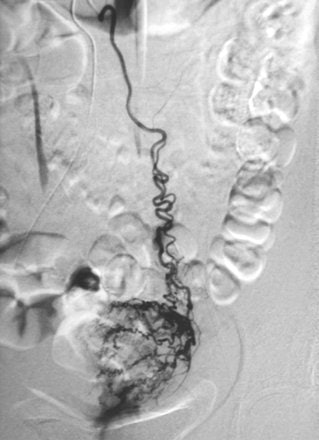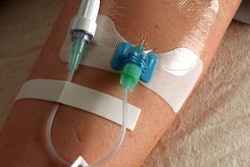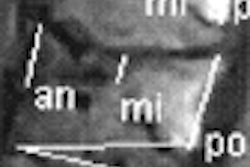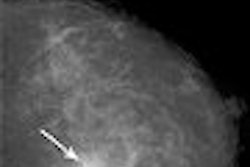
Interventionalists in the U.S. and France have identified several characteristics that can target patients who may require ovarian artery embolization (OAE) to ensure complete and successful fibroid treatment. They based their criteria on postuterine artery embolization (UAE) aortography results.
"Selected (OAE) in cases of fibroid supply from the ovarian artery has been described, and the associated risk of treatment-induced ovary failure has been recognized," wrote Dr. Suhny Abbara and colleagues in the American Journal of Roentgenology. "However, the frequency and extent of collateral uterine blood flow from the ovarian arteries after UAE have not yet been examined" (AJR, June 2007, Vol. 188:6, pp. 1558-1563).
Abbara's group, which included Dr. James Spies, is from Georgetown University Medical Center in Washington, DC; Massachusetts General Hospital in Boston; Kennedy Memorial Hospital in Cherry Hill, NJ; and Hôpital Lariboisière in Paris.
This retrospective review included 145 patients who underwent UAE for leiomyomas. For the UAE procedure, both common femoral arteries were accessed in all but one patient. Aortograms of the right and left uterine arteries were obtained simultaneously by hand injections before and after the procedure.
 |
| A 42-year-old woman undergoing UAE for treatment of symptomatic uterine leiomyoma. Aortogram obtained after subsequent selection and contrast injection of left ovarian artery shows substantial supply to uterine fibroids that may cause UAE treatment to fail unless left ovarian artery is also embolized. Abbara S, Boris Nikolic B, Pelage JP, Banovac F, Spies JB, "Frequency and Extent of Uterine Perfusion via Ovarian Arteries Observed During Uterine Artery Embolization for Leiomyomas" (AJR 2007; 188:1558-1563). |
"All aortograms obtained for evaluation of ovarian artery supply to the fibroids were obtained after UAE only. We believe that aortography is more sensitive for the detection of fibroid supply ... after UAE because of hemodynamic changes that occur during UAE," the authors explained.
A total of 290 ovarian arteries were evaluated. Ovarian artery catheterization and injection were required in 61% of the visualized ovarian arteries. Of these, 69% showed residual fibroid perfusion. Perfusion scores for individual ovarian arteries ranged from one to 18 segments, the group reported.
The authors determined that the following criteria were significantly associated with the presence of fibroid supply, as well as the number of segments supplied by the ovarian arteries: larger ovarian arteries, visualization of flow, and flow extension into the pelvis.
With regard to ovarian artery size, "the characteristic of having either a left or a right ovarian artery larger in caliber than a 5-French catheter had the best positive predictive value (80%)," they added.
The identification of these characteristics on flush aortogram indicated that OAE should be performed, Abbara and colleagues concluded. They explained that their current approach is to assess the extent of ovarian artery supply to fibroid tissue and, if there is evidence of extensive residual flow, to at least perform unilateral OAE.
By Shalmali Pal
AuntMinnie.com staff writer
June 1, 2007
Related Reading
UFE without standard aortography cuts radiation dose, May 18, 2007
ISET talks stress imaging know-how in AAA endograft, relative safety of UFE, February 12, 2007
Uterine artery embolization for fibroids speeds recovery, January 25, 2007
Copyright © 2007 AuntMinnie.com



















